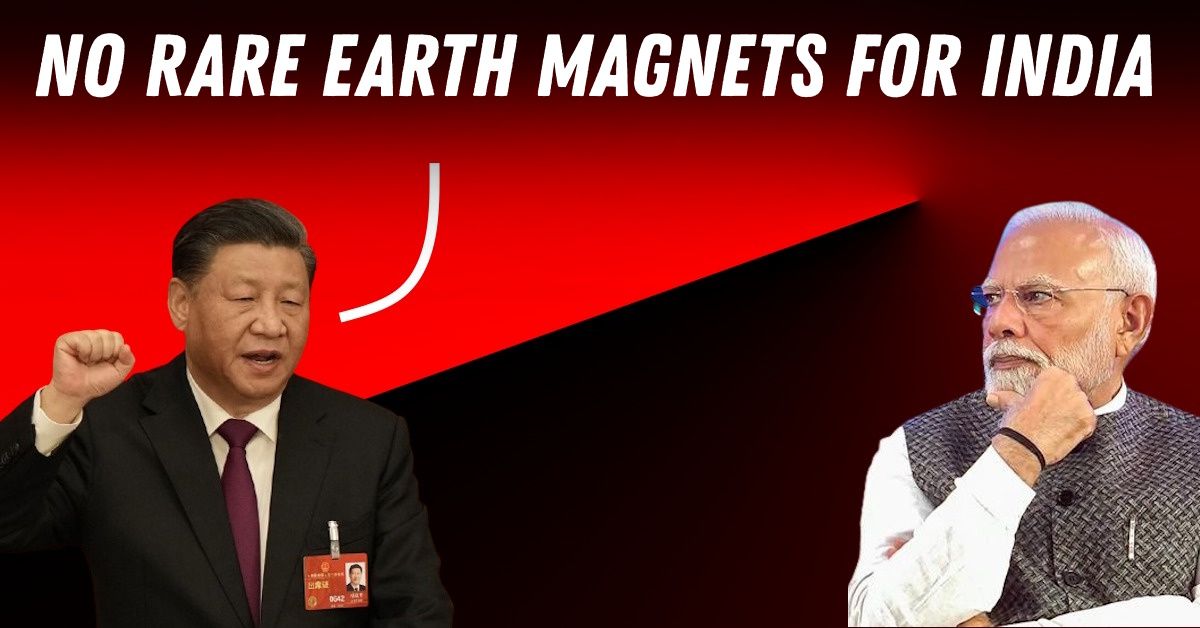Indian Electric Vehicle Factories Staring At Disruption Due To Rare Earth Magnet Shortage


In a sudden turn of events that could significantly impact India's burgeoning electric vehicle (EV) industry, a shortage of rare-earth magnets threatens to bring production to a standstill. The crux of the crisis lies in the abrupt halt of Chinese exports of neodymium-iron-boron (NdFeB) magnets, following new export-license requirements introduced by Beijing in April. This development has left Indian EV manufacturers grappling with the imminent risk of assembly line shutdowns, with some scooter and three-wheeler production lines potentially halting as early as August 2025 if the situation does not improve.
The heart of the issue is the critical role that NdFeB magnets play in the production of permanent-magnet synchronous motors (PMSMs), which power approximately 80% of the EVs sold in India. The country's heavy reliance on China for these magnets, accounting for more than 80% of its imports, has exposed a glaring vulnerability in its supply chain. As the Chinese Ministry of Commerce imposes stringent export controls, Indian OEMs find themselves with dwindling inventories and facing increased costs.
The shortage's impact is being felt unevenly across the industry. Two-wheeler and three-wheeler manufacturers, with their limited capacity to stockpile essential components, are on the frontline of this crisis. Some have been forced to curtail production to stretch out their remaining magnet supplies. In contrast, passenger car manufacturers, though not immune, have a slightly larger buffer thanks to higher inventory levels but still face significant challenges.
The situation has rapidly evolved from an inconvenience to a full-blown crisis, with the potential for widespread production stoppages if solutions are not found quickly. The industry is caught in a bind, with import clearance times ballooning and the cost of NdFeB magnets rising. The broader implications of this shortage are now becoming clear, affecting not just the automotive sector but also other industries reliant on these critical components, such as renewable energy and defense.
In response to the looming threat, stakeholders across the board are exploring various strategies to mitigate the impact. These include importing complete motors to bypass the export restrictions, shifting to alternative motor technologies that do not require rare-earth magnets, and ramping up recycling efforts to recover neodymium from e-waste. However, these are at best short-term fixes to a problem that requires a more sustainable solution.
The Indian government, recognizing the gravity of the situation, has initiated discussions and proposed incentives to boost domestic production of these critical magnets. However, these efforts are yet to yield tangible results, with significant challenges in establishing a local supply chain for rare-earth magnets. Meanwhile, the industry is adapting, exploring technological innovations and alternative materials to reduce its reliance on NdFeB magnets.
The rare-earth magnet shortage serves as a stark reminder of the vulnerabilities in global supply chains and the need for greater self-reliance in critical technologies. As the EV industry navigates this crisis, the lessons learned could pave the way for more resilient and sustainable practices. However, with the clock ticking and production lines at risk of shutting down, the immediate focus remains on finding viable solutions to keep the wheels of progress turning.
The situation unfolding in the Indian EV market underscores a critical juncture for the industry, highlighting the importance of diversifying supply chains and investing in local production capabilities. As companies and governments scramble to address the current shortage, the path forward demands innovation, collaboration, and a concerted effort to secure the future of clean mobility.